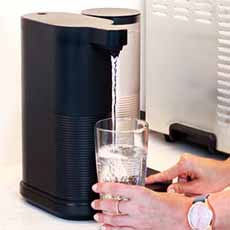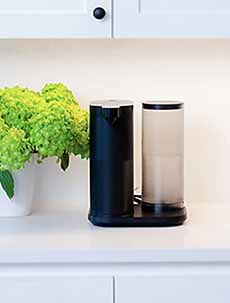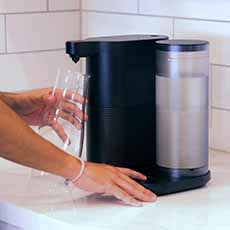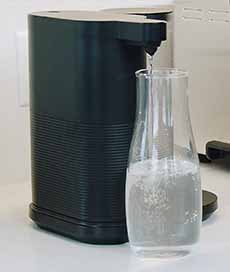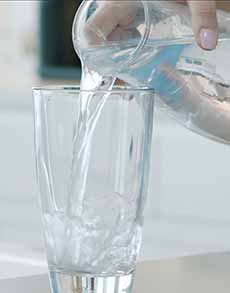How About A Countertop Water Filter For National Water Quality Month?
|
|
In honor of National Water Quality Month each August, Aquasana, makers of water filtration systems—for the whole house, under a particular sink, shower, and countertop—surveys Americans about their drinking water concerns. Their goal is to spread awareness about water quality issues and help people find solutions. The 2022 survey conducted in March 2022 among 2,246 U.S. adults, found that 77% of Americans filter their drinking water at home, a figure that’s steadily grown over each of the past three years. An interesting finding: Trust in bottled water has declined by 24%, from 41% in 2020 to 31% in 2022. (Check out some reasons why.) > You can read the full Aquasana survey here. > The history of water filtration is below. Since we personally drink a lot of water and cook a lot of food, we purchased the first countertop water filtration device available in the U.S., the Brita pitcher, when it first arrived in 1988. We’ve also tried Pur, another gravity-based pitcher filter device. But when electric countertop machines appeared, we tried them—and remained a loyal fan of the electric appliance. which deliver, in our experience, faster filtration and better-tasting water. You can install an Aquasana home filtration system and have purified water flowing from every tap in your house, and we envy you! For our New York City apartment, we need a countertop unit. Yes, from the beginning of National Water Quality Month, we’ve been enjoying water from our Aquasana Clean Water Machine, which plugs into the wall and filters 77 contaminants including asbestos, lead, mercury, pesticides, PFAs, and pharmaceuticals. It gets rid of the contaminants while leaving any naturally occurring beneficial minerals—including calcium, magnesium, and potassium—in the filtered water. We drink lots of water every day, and while New York City’s tap water is world-renowned for its high quality, it doesn’t have that totally pure taste that we enjoy in Fiji Water (which we know has its fans and its nonfans and disclosure—no home filtration system we know of produces the pure taste of Fiji Water). To be as eco-friendly as we can be, we’ve long abandoned buying water in plastic bottles. Instead, we filter water on our countertop and carry refillable bottles outside. And we feel good because one single Aquasana Clean Water Machine replaceable filter replaces more than 2,200 single-use plastic bottles. Makes a difference, doesn’t it? Here’s a video of Aquasana in action. Head to Aquasana.com or Amazon to purchase a machine. And while you’re there, look at the showerhead filtration system. Some quick bullets on whom to thank for modern water filtration systems. Here’s a more detailed discussion. |
|
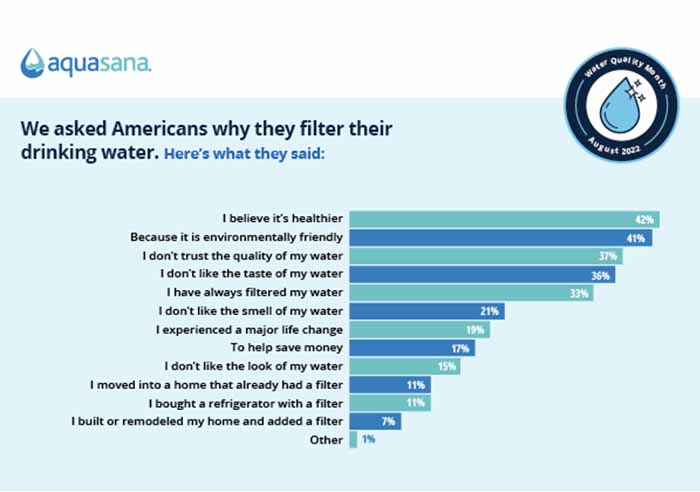 [8] Why consumers filter their water. _________ *PFAs are man-made chemicals that have been used in industry and consumer products since the 1950s. They have been used to make nonstick cookware, water-repellent clothing, stain-resistant fabrics and carpets, some cosmetics, some firefighting foams, and products that resist grease, water, and oil. Research indicates that they can have harmful health effects. Here’s more about them.
|
||
